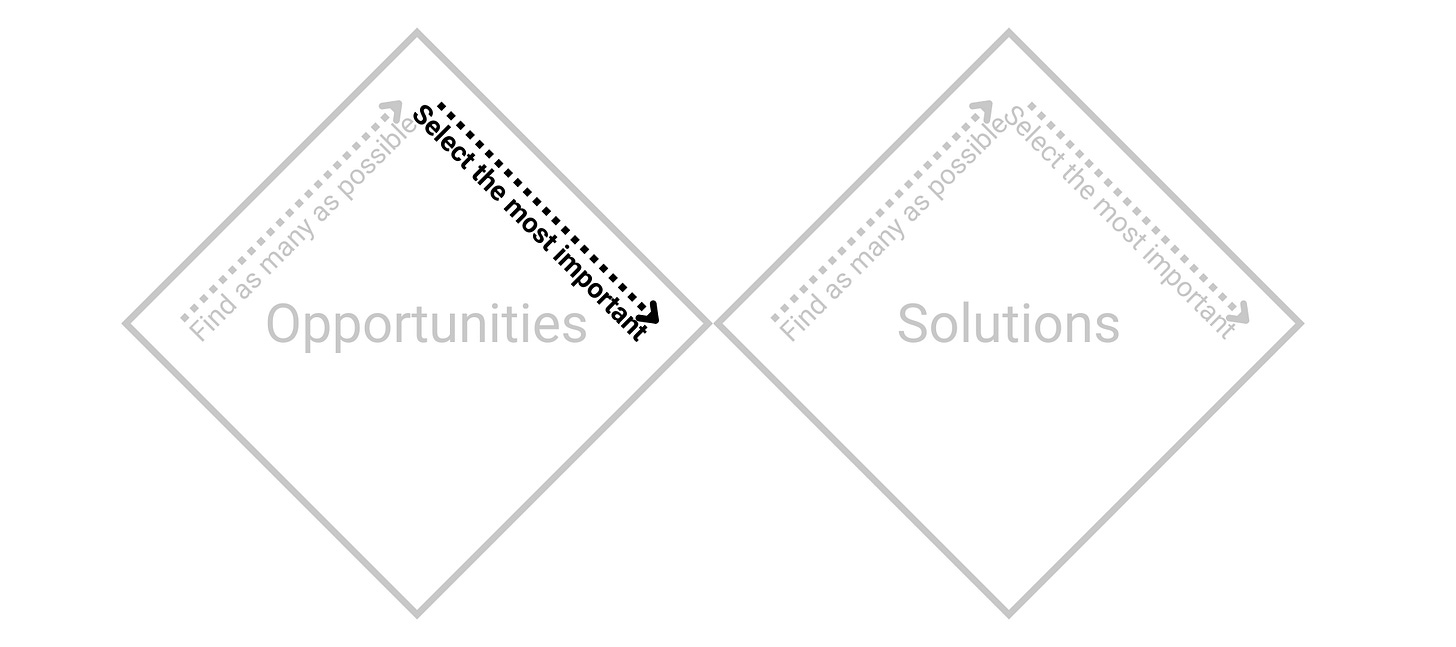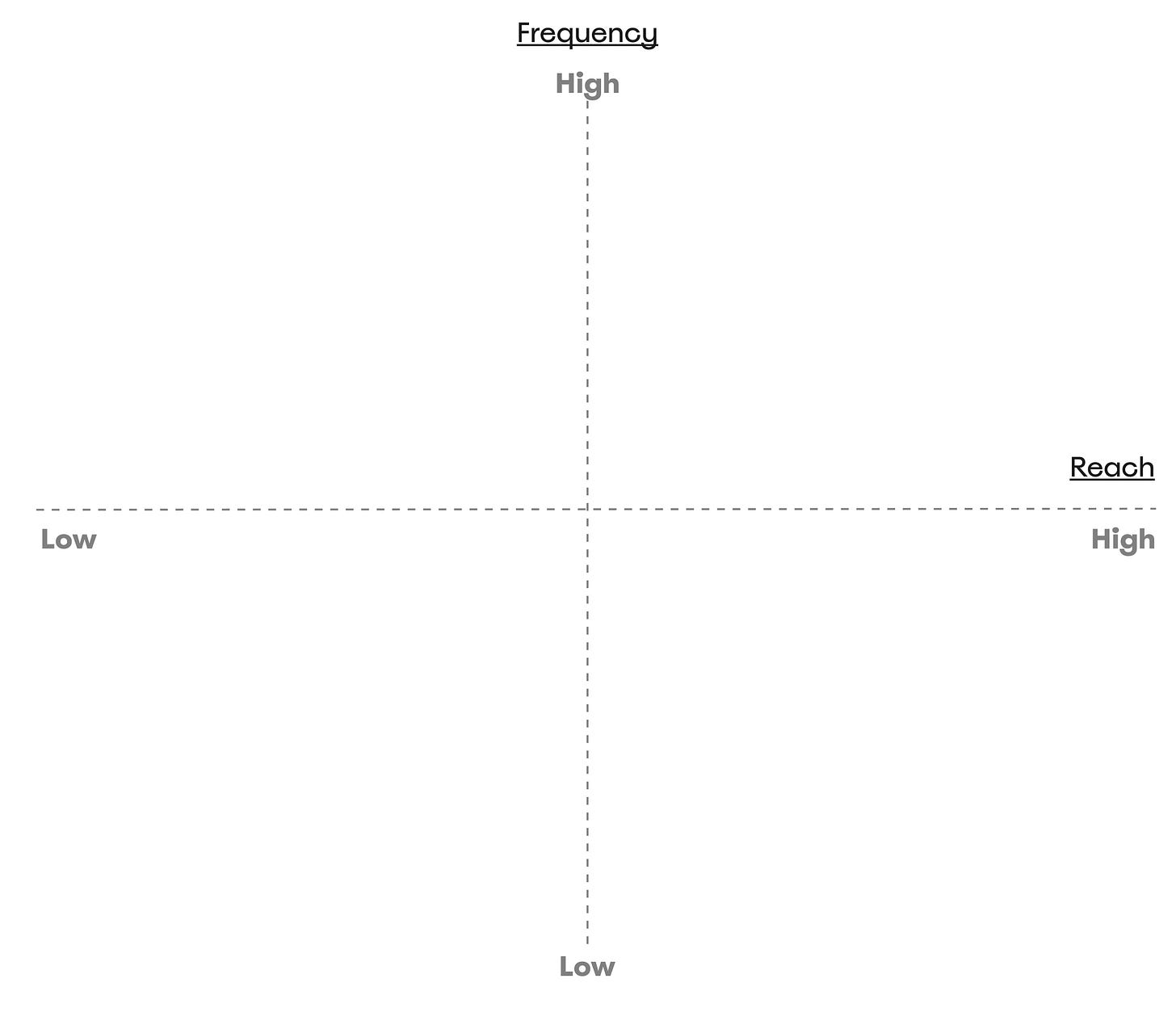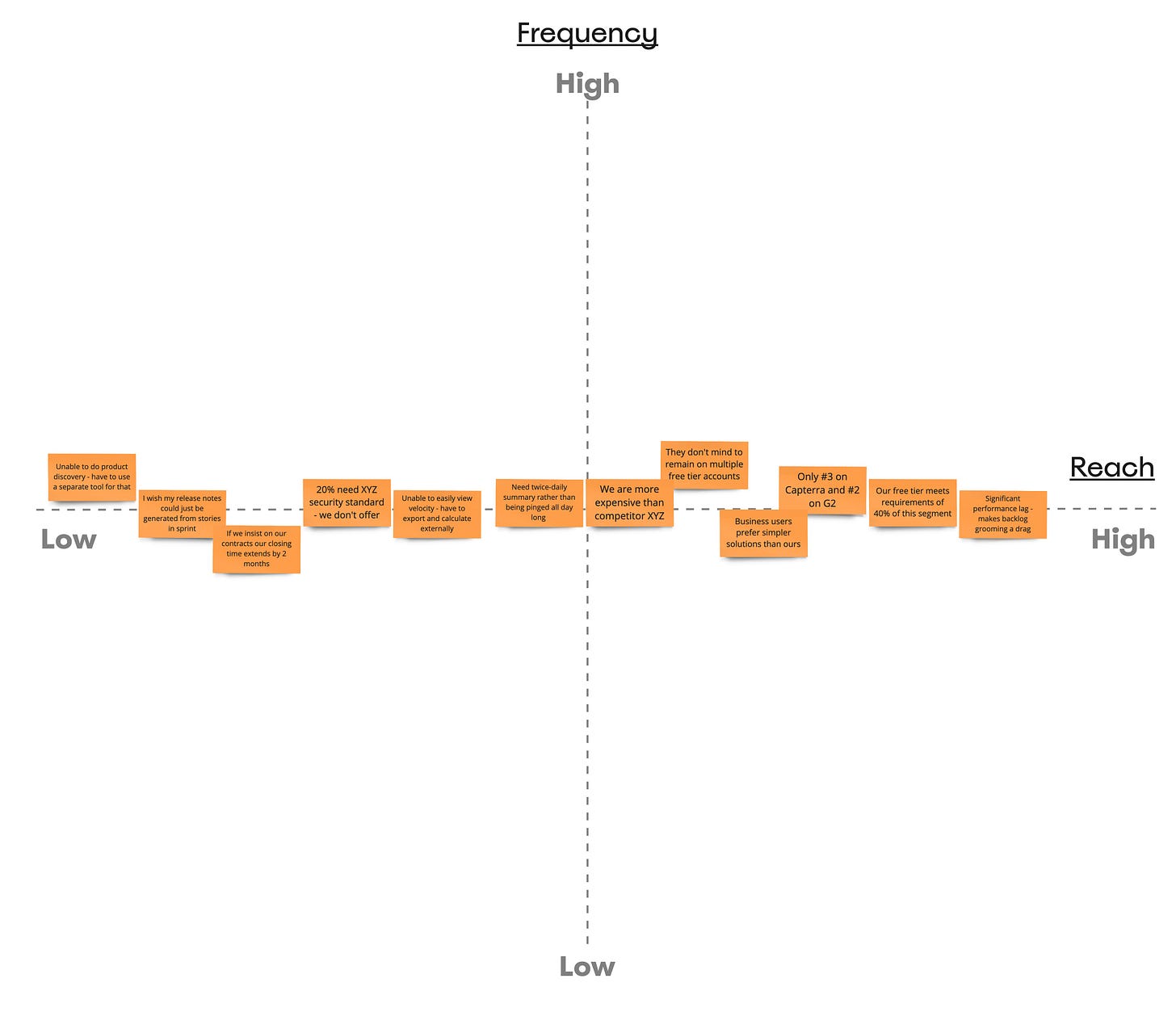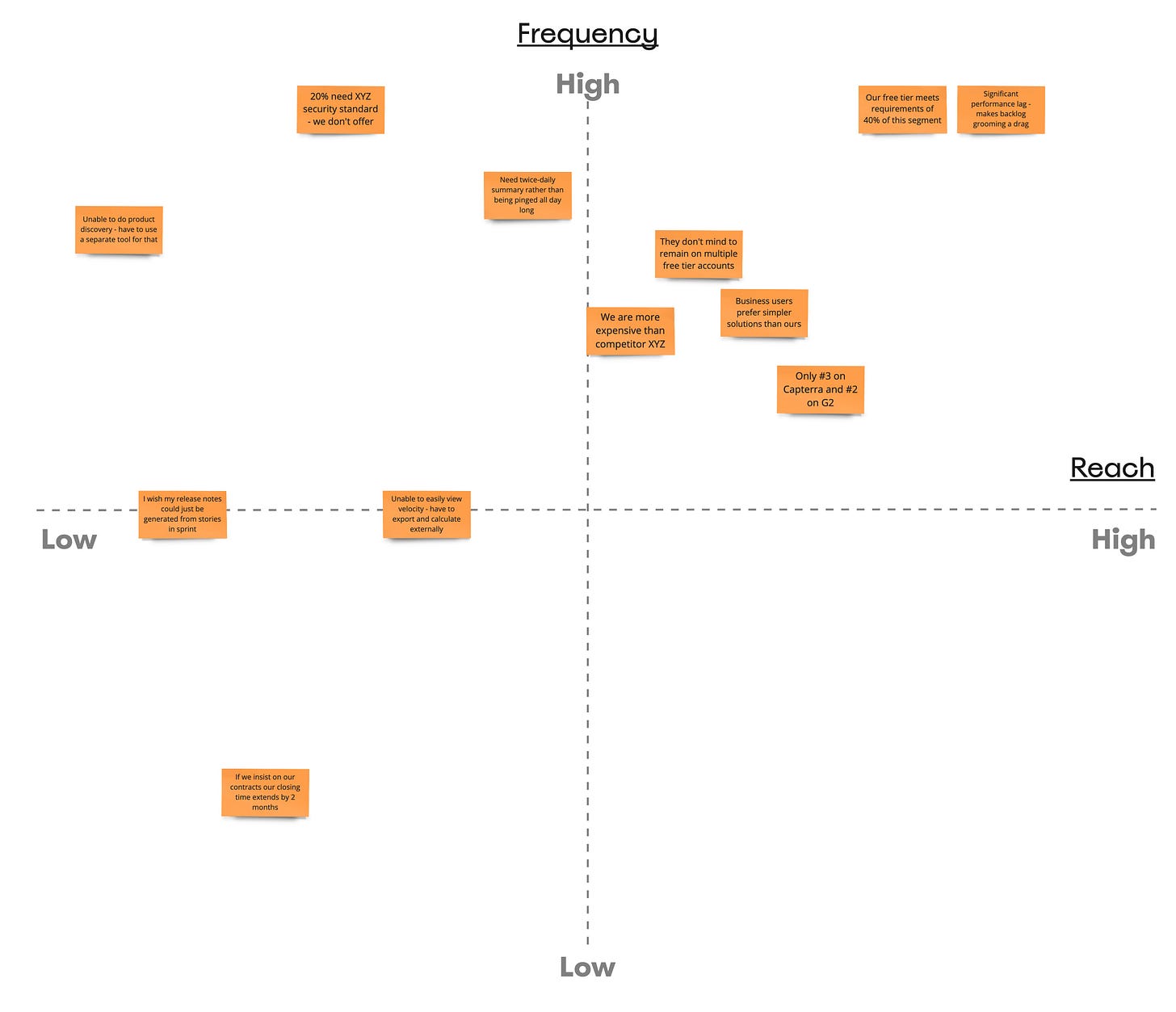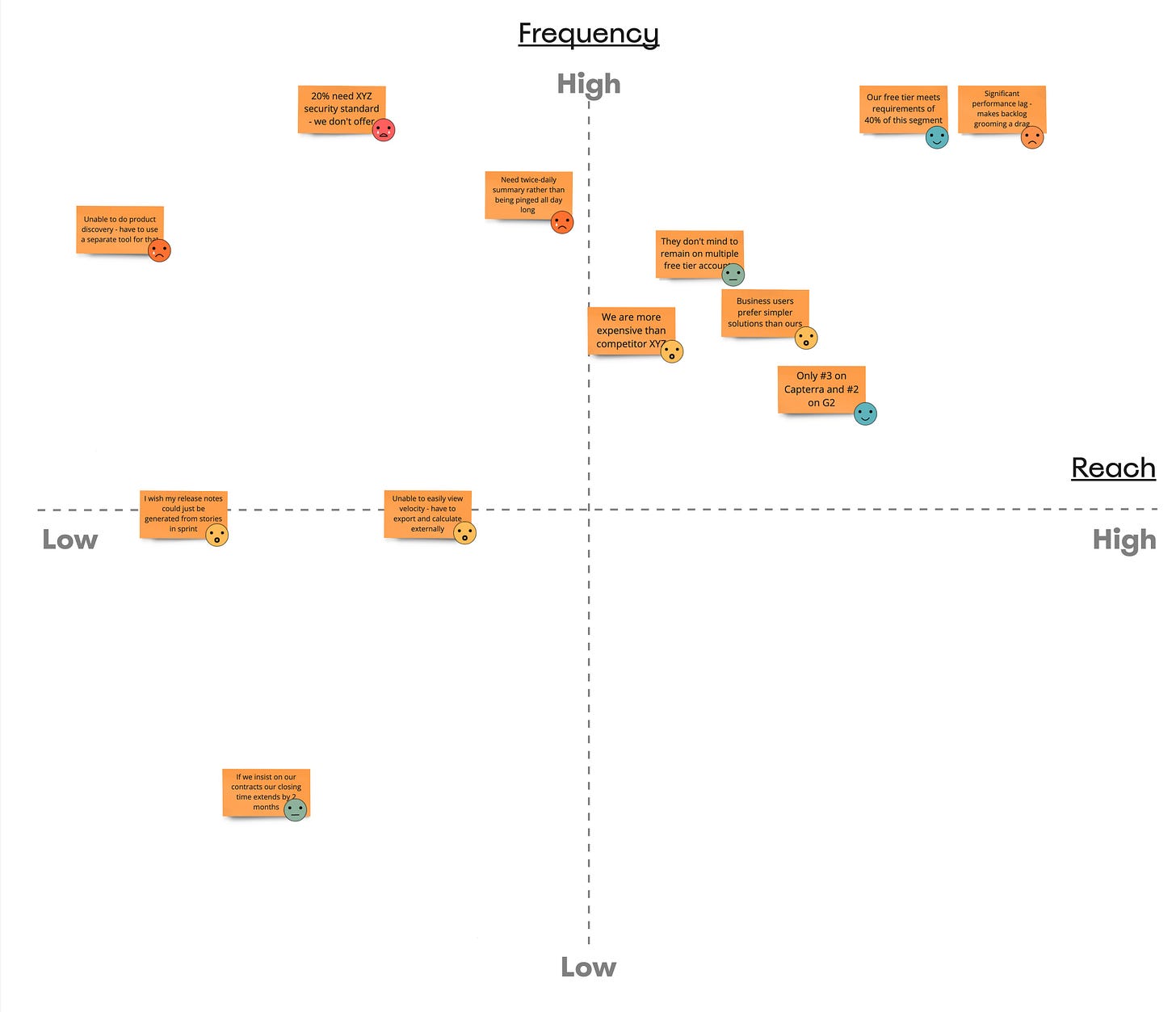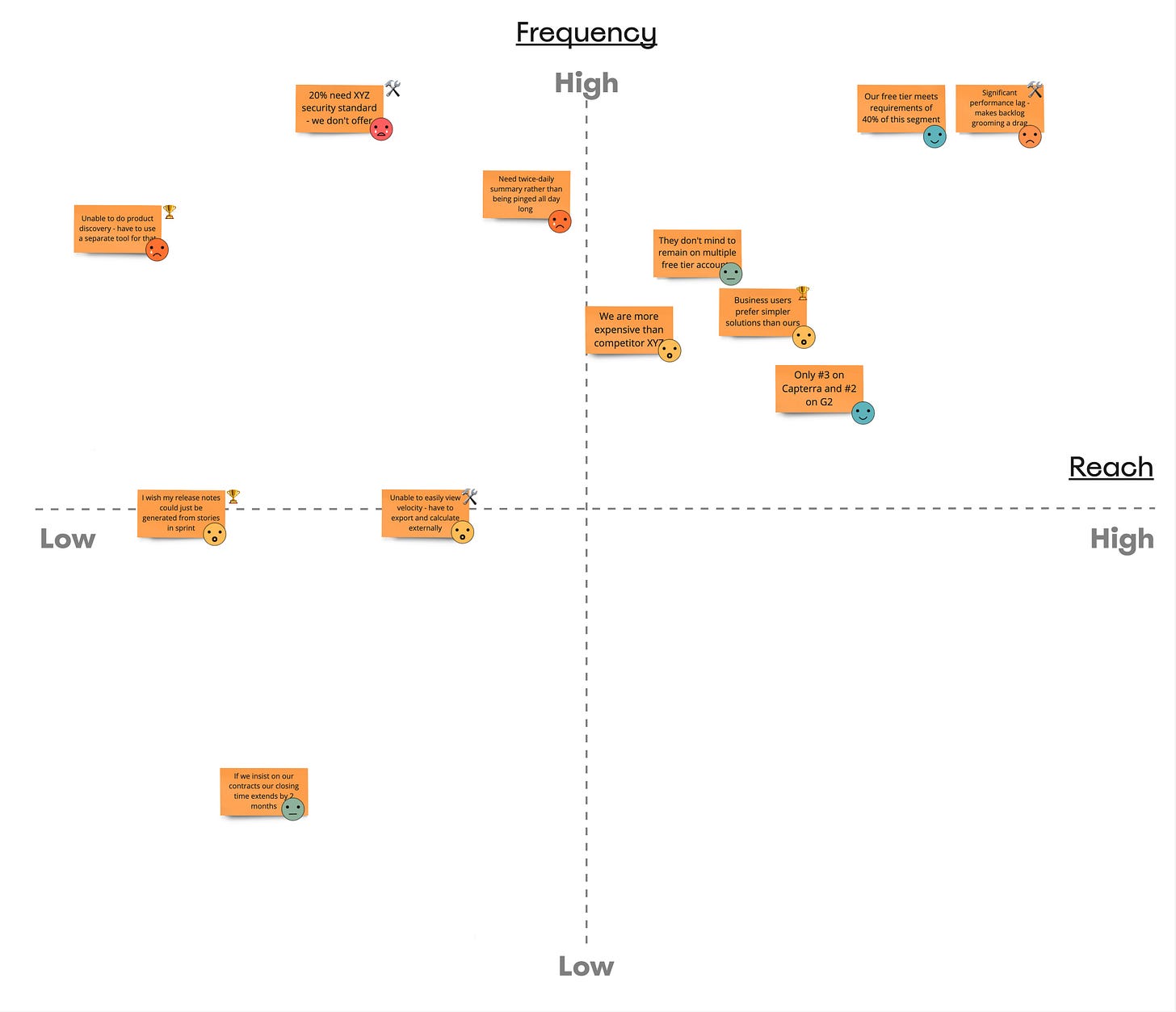Unlock Customer Gold: A Foolproof Guide to Prioritizing Opportunities
A Step-by-Step Framework for Product Strategists and Facilitators
How to Facilitate Prioritization of Your Customer's Opportunities
As a product strategy consultant and facilitator, I've developed a favorite technique for identifying the ripest customer opportunities. This method, which I use in Strategy Sprints and other product workshops, ensures a well-prioritized feature set through quality divergence and convergence on two key subjects:
Customer opportunities: challenges, pain points, and desires
Solutions to top opportunities
For both, you'll benefit from generating a mass of ideas followed by quality prioritization. Let's explore how to land on well-prioritized customer opportunities.
Why "Opportunities" Instead of "Problems"?
We refer to customer challenges, pain points, or desires as "opportunities" because they represent areas where we can deliver value. By addressing these issues, we create something customers would be willing to pay for or allow us to monetize in other ways.
Gathering Customer Insights
We learn about these opportunities through:
Primary research
Customer feedback
Customer journey recordings
Usage data
Mapping Customer Opportunities
It's helpful to map known opportunities on user journey maps and conduct interviews with stakeholders to gather all available knowledge. Include data around opportunity parameters wherever possible.
Here's what this can look like for a made-up project management software that targets for a specific client segment:
Yellow stickies represent opportunities we're already addressing, while orange ones indicate newly discovered challenges as customers interact with our product.
For growth-focused teams, you might zoom in on initial phases of customer discovery and break out channels for each customer persona.
Prioritizing Opportunities
Once we've captured all opportunities, we prioritize them using the following steps:
Assess Reach and Frequency
Place challenges on a chart comparing their relative reach (how many customers they impact) and frequency (how often they're experienced).When I facilitate I ask participants to first assess Reach. The key here is to not think of absolute values if you don’t have them - just to be able to identify which opportunities have greater reach than others.
Next, I ask them to organize the opportunities based on how frequently are these pain points, challenges or desires experienced.
Add Severity
I use pain icons to indicate the severity of each opportunity. In workshops, participants assess pain levels, discussing any differences.Now, Consider Market Factors
Identify opportunities that are:
Expected tablestakes (🛠️)
Strategic differentiators (🏆)
Be critical of tablestakes statements. If everyone in your category addresses a low-severity pain point this might not be tablestakes but rather an opportunity to not invest in that opportunity and rather focus on unaddressed severe pain points or strong desires.
Selecting Top Opportunities
Based on these criteria, choose the top opportunities to focus on:
Address true tablestakes with high reach and severe pain
Identify differentiators with high reach and severe pain
Consider segment shifts for differentiating opportunities with lower reach in your current segment
Remember to focus on customer pain, not internal pain, when assessing opportunities. While internal opportunities may arise, evaluate their impact on customers.
Empowering Your Product Strategy
By mastering this prioritization process, you're not just organizing ideas – you're unlocking the full potential of your product strategy. This approach allows you to:
Align your team around customer-centric priorities
Make data-driven decisions that resonate with your market
Identify unique opportunities for differentiation
Build products that truly solve customer pain points
Remember, the most successful products aren't just built on great ideas; they're built on a deep understanding of customer needs and a strategic approach to addressing them. By consistently applying this framework, you'll be well-equipped to navigate the complex landscape of product development and deliver solutions that your customers truly value.As you implement this process, you'll likely discover new insights about your customers and your market. Embrace these discoveries – they're the seeds of innovation that can propel your product to new heights.So, are you ready to transform your approach to product strategy? Start mapping those customer journeys, prioritizing those opportunities, and watch as your product evolves into something truly remarkable. Your customers – and your bottom line – will thank you.
What opportunity will you uncover next?





